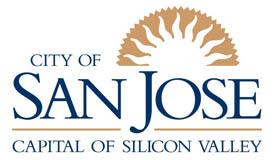Wall Street Journal, March 27, 2013
The Bay Area is experiencing a rebirth of municipal Wi-Fi networks, after a decade of fits and starts in such efforts.
Last week, Santa Clara launched a free public wireless network that blankets nearly the entire city of 120,000 residents, or about 19 square miles. The new network replaces a weaker, nine-year-old system that covered only half the city.
The move follows San Jose’s unveiling earlier this month of a free, high-speed Wi-Fi service that soon will cover a 1.5-square-mile stretch of its downtown.
During the past decade, hundreds of cities including San Francisco and San Jose announced free Wi-Fi efforts to increase the public’s access to the Web. The municipalities adopted a variety of business models for the potential networks, from public ownership to public-private partnerships.
….snip…
Greater demand for Wi-Fi networks, meantime, gives cities more incentive to build them. The factors behind this include the proliferation of smartphones that can function better when connected to Wi-Fi and moves by wireless carriers to limit monthly data usage or charge more for it.
“I’m surprised we don’t see more investments from local governments” in municipal networks, given it is easier now to create them, said Chris Mitchell, director of the Telecommunications as Commons Initiative, part of a nonprofit that promotes municipal Internet services.
He added that telecommunications companies “are not meeting local needs and local governments have been compelled to start filling in to provide the needed connectivity.”
Vijay Sammeta, San Jose’s chief information officer, said his city’s network cost only about $100,000 to install and requires around $20,000 annually to maintain. He said the price of wireless equipment has gone down and networks today require fewer pieces of equipment, which also helped lower the cost.
The new network will provide service to some city offices, city-owned wireless parking meters and the convention center. Mr. Sammeta said he hopes thousands of people will use the service daily, including “pop-up” businesses that temporarily occupy empty retail space.
Gretchen Baisa, who helps run NextSpace, a “co-working” space for independent contractors in downtown San Jose, said she already has spotted people working on laptops outdoors connected to the municipal network, which she said has an impressive download speed of eight megabits per second.
“For a public amenity that people would want in the 21st century, this is high up on the list,” she said.
Mountain View and Milpitas also got free citywide Wi-Fi service in the middle of the past decade, thanks to operational or financial support from Mountain View-based Google.
Google said there are 20,000 “active users” monthly of the Mountain View network. The city said that, anecdotally, some low-income residents and startups rely on it.
Chris Clark, Mountain View’s vice mayor, said the city is working with Google on how to upgrade the network, which is nearly seven years old “and showing its age in terms of speed and capacity.”
In San Francisco, the city has launched free wireless Internet near some public housing units, in public parks and libraries. A spokesman for San Francisco Mayor Ed Lee said public Wi-Fi is a mayoral priority and “we are exploring alternatives to achieve it.” He declined to elaborate.
Overall, around 10 U.S. municipalities provide free wireless-Internet service for a large swath or all of their territory, estimated Mr. Mitchell, director of Minneapolis-based Telecommunications as Commons Initiative. Hundreds of other cities, from Santa Monica to Boston, also offer free Wi-Fi hot spots in certain public areas such as parks.
…snip…





